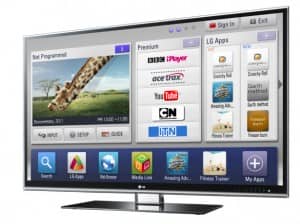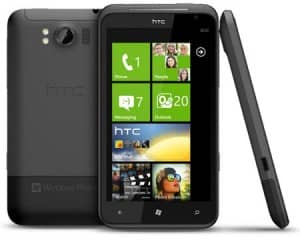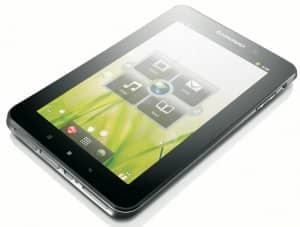With the dust settling on this year's IFA we thought we'd run down some of the other notable pieces of tech that were on show at the Berlin’s Messe; from special TV's, Windows Mango phones and bargain-bin tablets we’ve got you covered.
 LG has always been renowned for bringing HDTV's to the masses and they are looking to continue this trend with their latest line of 3D TV's.
LG has always been renowned for bringing HDTV's to the masses and they are looking to continue this trend with their latest line of 3D TV's.
At IFA they showed of the Dual Play LW980T - the unique selling point of this set is it allows gamers to each view a full screen of their own when playing games – meaning you no longer to deal with only having half a screen for split screen gaming.
This tech has been used in cars before – as passengers will see a TV, but the driver see’s a sat-nav. Now this tech is making its way to home consoles. Quite how it’s going to work isn’t clear; whether it will need to baked into the game from the ground-up or will be backward compatible isn’t clear – but Sony is to release a PS branded version soon.
The TV is based on LG's Cinema 3D series of televisions and apart for games-specific dual-view technology it also features full HD 2D and 3D flicker-fee image system.
Being a LG Cinema 3D TV - it also comes with 2D to 3D conversion technology. The TV supports Nano Full LED screen for substantially clearer and brighter pictures. The model feature some rather fetching looks too; with slimmer frames and measures an extremely thin 24.66mm thick.
LG has also added apps including Facebook, Youtube, Twitter and iPlayer will be available through a suite of in-bulit TV software.
This Cinema 3D TV is available in two screen sizes 47-inches and 55-inches. An interesting addition to this television is that it will come with 7 pairs of Dual Play 3D glasses.
 HTC was on hand to show off a couple of handsets for Windows Phone and its mango-ready handsets Titan and Radar. Radar is aimed at the mid-range for pricing and specs. And Titan looks to be one of the top-spec phones coming to Widows Phone this year
HTC was on hand to show off a couple of handsets for Windows Phone and its mango-ready handsets Titan and Radar. Radar is aimed at the mid-range for pricing and specs. And Titan looks to be one of the top-spec phones coming to Widows Phone this year
The Radar comes with a 3.8-inch LDC screen, 1GHz processor and 8GB of internal memory. The Radar is defiantly aimed for a mid-price point and doesn't have anything to really shout about.
But the Titan is a completely different kettle of fish. It comes with a 4.7-inch WVGA display, a unibody design, a 1.5GHz single-core Qualcomm processor, a 5.1 surround sound, an 8MP rear-facing camera with F2.2 lens, 720p video recording capabilities, a 1.3MP front-facing camera, and a 16GB of on-board memory. The HTC Titan will be available starting October 2011 in Europe.
Both handsets are expected come with optional charging docks, front-facing cameras ready to take advantage of any future Skype integration and improved rear cameras which will include wider 28mm lens'.
While the phones are definitely bring something new to the table, HTC decided not to rock the boat when it comes to the style of the phones, they’ve decided to keep with the now familiar slab design we've been accustomed to. Even so, the Titan looks to be a strong contender to take over the reigns of HTC's current popular Windows Phone, the HD7.
 Lenovo had a busy IFA this year the launch of their new line of Ultrabooks, but if you’re looking for something that isn't going to break the bank it might be worth looking at their IdeaPad A1 - a $199 priced Android tablet.
Lenovo had a busy IFA this year the launch of their new line of Ultrabooks, but if you’re looking for something that isn't going to break the bank it might be worth looking at their IdeaPad A1 - a $199 priced Android tablet.
The IdeaPad A1 measures 7-inches and is powered by a single-core 1Ghz cortex A8 chip, it weighs 400g and is 10 mm thick. Coated in plastic the Lenovo isn’t going to win any beauty competitions, but Lenovo claims that the internal structure is magnesium and built for durability.
Lenovo are touting a 7-hour battery life and the tab will come with 8GB on-board storage. The display is a very capable 1024×600 resolution, 3-megapixel rear camera and front-facing VGA camera.
The Lenovo will come with both microSD can full-size SD card slots for extra expansion.
The IdeaPad is the third tablet from Lenovo, but this one has major difference; it's running Gingerbread rather than the tablet-specific Honeycomb. The inclusion of Gingerbread will no doubt be the reason why the IdeaPad is so cheap.
This Lenovo IdeaPad A1 will be available in four different colours; black, blue, pink and white. Also, on offer will be 16GB model at $249 and a 32GB at $299.
 Toshiba for some stole the show for new TV’s with latest attempt a glasses-free 3D. They showed off the Toshiba ZL2 a new range of 3DTV, which boasts a quad HD display capable of rendering images at an eye-watering 3840 x 2160 resolution. Not that you’ll find any content of that resolution. Its party piece comes from its glasses-free 3D tech.
Toshiba for some stole the show for new TV’s with latest attempt a glasses-free 3D. They showed off the Toshiba ZL2 a new range of 3DTV, which boasts a quad HD display capable of rendering images at an eye-watering 3840 x 2160 resolution. Not that you’ll find any content of that resolution. Its party piece comes from its glasses-free 3D tech.
The new technology can show 3D images to 9 different viewers in one room. It does this through its face-tracking technology. Faces are tracked so that the TV can adjust images so everyone in the room can see 3D images from any angle without having to wear rather annoying 3D glasses.
The aim of face-tracking is to provide a 3-D experience no matter where the viewer is sat in the room. There are nine different optimal angles for good picture quality in the Toshiba set. The user pushes a button on the remote control, which activates the camera.
The viewer can upscale 2-D content to 3-D. As part of the conversion, the Toshiba TV offers depth control to adjust the depth to the user’s liking. The TV will be available in Germany in December with a hefty price tag of €7,999 euros, or $11,400.
The debut by Toshiba is being watched very carefully by many in the industry as the HDTV market is beginning to slow and many companies are looking for ways to increase sales and Toshiba’s new tech could be the ticket.
With this week’s debut, Toshiba has taken an early lead over rival manufacturers still struggling to make 3-D television sales show better growth. Glasses-free viewing may change the tide of disappointing sales figures, but a $11,400 they need to work on cost quickly.
